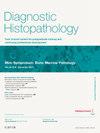人工智能:重新定义前列腺癌诊断的未来
引用次数: 0
摘要
人工智能(AI)正在彻底改变前列腺癌(PCa)的诊断和治疗,前列腺癌是世界上最常见的癌症之一。尽管PCa发病率高,但其死亡率仍然相对较低,但其异质性给诊断和治疗带来了重大挑战。由于生物标志物和传统诊断方法(如血清学标志物、多参数MRI (mpMRI)和前列腺活检的组织病理学评估)的局限性,临床医生在区分惰性和侵袭性形式的疾病方面面临困难。人工智能通过提高诊断精度、减少观察者之间的差异以及简化包括放射学、病理学、免疫组织化学(IHC)和基因组学在内的多个领域的工作流程,提供了创新的解决方案。在放射学中,人工智能集成系统增强了mpMRI的解释,在识别临床重要PCa方面优于使用PI-RADS标准的放射科医生,同时最大限度地减少假阳性。同样,在病理学中,人工智能算法通过准确识别格里森模式、神经周围侵袭和其他诊断特征来改进肿瘤分级。研究表明,人工智能可以作为二次读取系统,减少工作量,并支持病理学家提供一致、高质量的诊断。人工智能在免疫健康中的作用包括评估预后标志物,如Ki-67和PTEN,从而提高准确性并有助于预测患者预后。虚拟多路复用等工具可以在不影响形态完整性的情况下同时分析多种生物标志物,从而进一步推进免疫组化。在基因组学和蛋白质组学中,人工智能有助于使用质谱法识别新的生物标志物,提供非侵入性诊断方法和个性化治疗策略。虽然人工智能在前列腺癌诊断中显示出巨大的潜力,但它并不是要取代临床医生,而是作为一种宝贵的辅助手段。人工智能与标准化、多样化的数据集和临床工作流程的集成有望通过提高精度、效率和患者预后来推进PCa护理。本文章由计算机程序翻译,如有差异,请以英文原文为准。
Artificial intelligence: redefining the future of prostate cancer diagnostics
Artificial intelligence (AI) is revolutionizing the diagnosis and management of prostate cancer (PCa), one of the most common cancers worldwide. Despite its high incidence, PCa's mortality rate remains relatively low, yet its heterogeneity poses significant diagnostic and therapeutic challenges. Clinicians face difficulties in distinguishing between indolent and aggressive forms of the disease, compounded by limitations in biomarkers and traditional diagnostic methods, such as serological markers, multiparametric MRI (mpMRI), and histopathological evaluation of prostate biopsies. AI offers innovative solutions by improving diagnostic precision, reducing interobserver variability, and streamlining workflows across multiple domains, including radiology, pathology, immunohistochemistry (IHC), and genomics. In radiology, AI-integrated systems enhance the interpretation of mpMRI, outperforming radiologists using the PI-RADS standard in identifying clinically significant PCa while minimizing false positives. Similarly, in pathology, AI algorithms refine tumor grading by accurately identifying Gleason patterns, perineural invasion, and other diagnostic features. Studies have demonstrated the ability of AI to serve as a second-read system, reducing workloads and supporting pathologists in delivering consistent, high-quality diagnoses. AI's role in IHC includes the evaluation of prognostic markers such as Ki-67 and PTEN, where it improves accuracy and aids in predicting patient outcomes. Tools like virtual multiplexing further advance IHC by enabling simultaneous analysis of multiple biomarkers without compromising morphological integrity. In genomics and proteomics, AI facilitates the identification of novel biomarkers using mass spectrometry, offering non-invasive diagnostic approaches and personalized therapeutic strategies. While AI demonstrates substantial potential in PCa diagnostics, it is not intended to replace clinicians but to serve as an invaluable adjunct. The integration of AI with standardized, diverse datasets and clinical workflows holds the promise of advancing PCa care through enhanced precision, efficiency, and patient outcomes.
求助全文
通过发布文献求助,成功后即可免费获取论文全文。
去求助
来源期刊

Diagnostic Histopathology
Medicine-Pathology and Forensic Medicine
CiteScore
1.30
自引率
0.00%
发文量
64
期刊介绍:
This monthly review journal aims to provide the practising diagnostic pathologist and trainee pathologist with up-to-date reviews on histopathology and cytology and related technical advances. Each issue contains invited articles on a variety of topics from experts in the field and includes a mini-symposium exploring one subject in greater depth. Articles consist of system-based, disease-based reviews and advances in technology. They update the readers on day-to-day diagnostic work and keep them informed of important new developments. An additional feature is the short section devoted to hypotheses; these have been refereed. There is also a correspondence section.
 求助内容:
求助内容: 应助结果提醒方式:
应助结果提醒方式:


